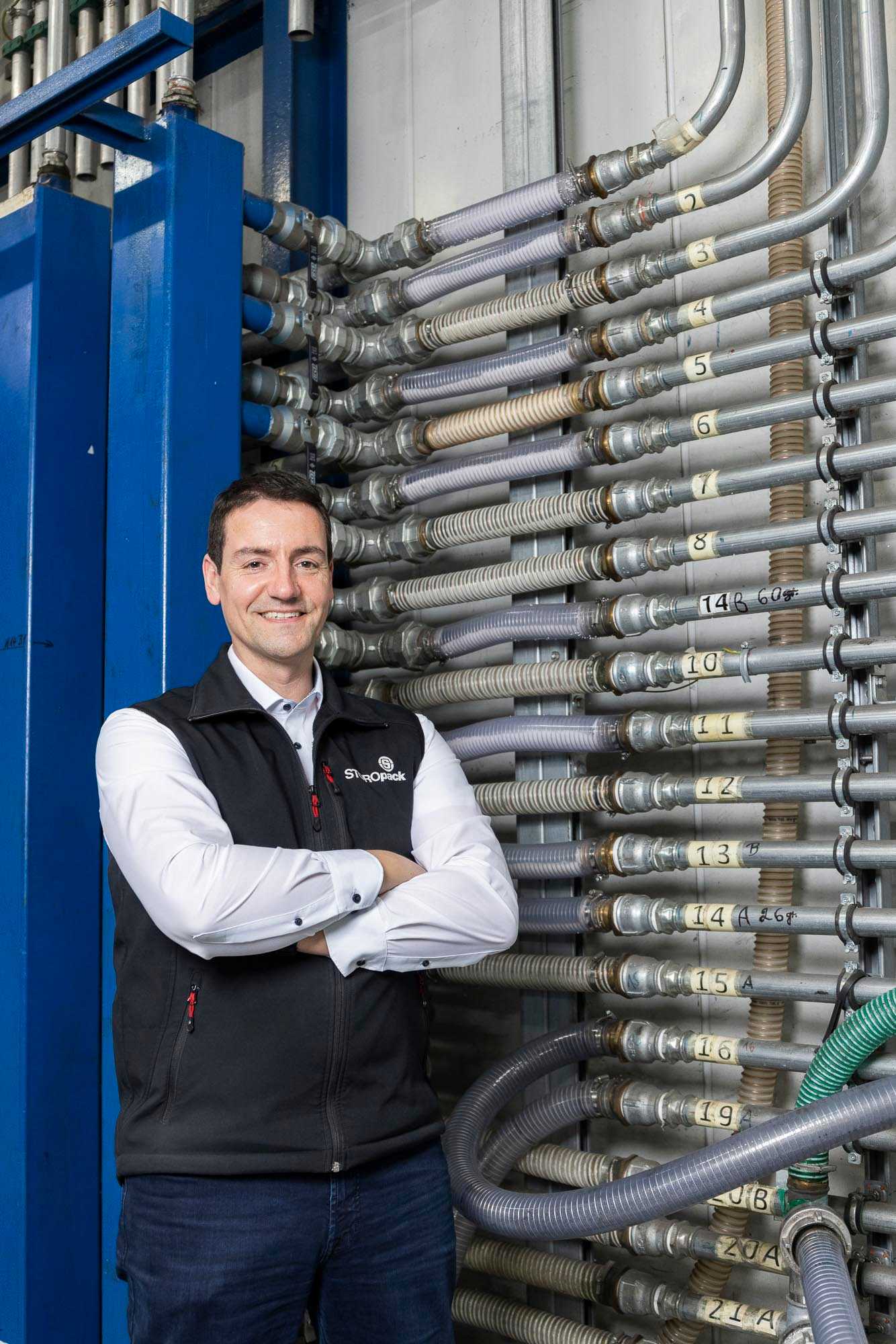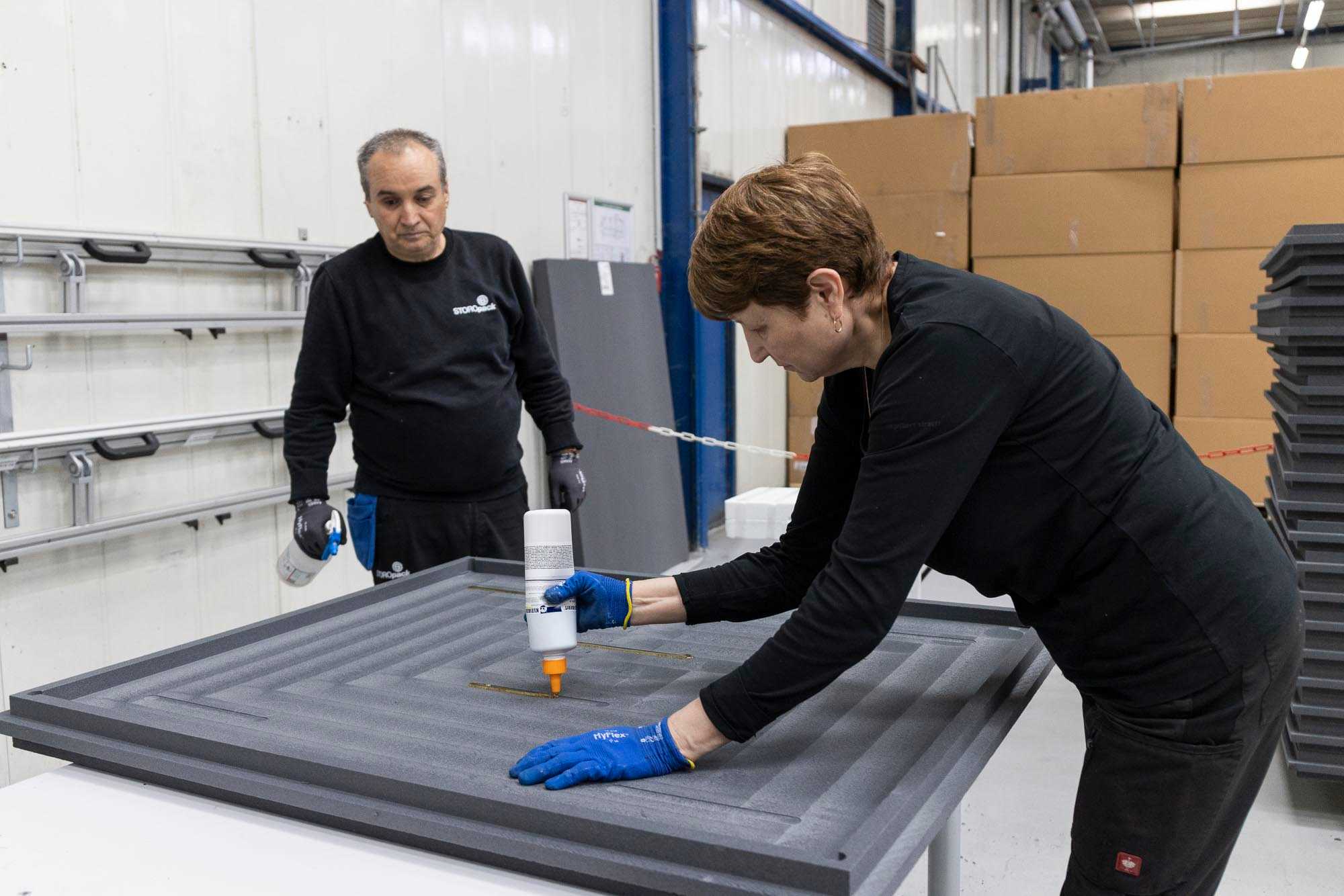
How Storopack scores points with temperature-controlled packaging with the Rover Plast:
Perfect Protective Packaging - providing the right protection for all goods, that's the motto of Storopack, the globally active family-run company headquartered in Metzingen. The company is divided into two divisions: Molding and Packaging. The EPS, EPO and EPP substances are really the DNA of the Molding division. It's all about EPS and EPO at the Langenau plant. Plant Manager Dr. Andreas Bleier explains: “We belong to the Molding Division, where we produce technical molded parts and protective packaging in molding machines. Another mainstay for the last six years has been temperature-controlled packaging for the pharmaceutical and food industries.”

The demand for temperature-controlled packaging (TCP for short) is great. With this, it is possible to transport foodstuffs or medications at precisely defined temperature profiles. The TCP from Langenau is usually made up of EPS or EPP with interior passive cold packs. These cold packs ensure that the desired temperature window is maintained. The temperature profile of all TCP solutions is tested by the company in its own refrigeration and climate chambers and certifies the packaging for the respective use.
Smaller TCP solutions are made up of EPP molded parts. The packaging specialist has come up with an innovation, however: a temperature controlled packaging with interior dimensions that can accommodate a Euro pallet, the so-called pallet shipper. This solution can maintain a temperature window between 2°C and 8°C over five days. Andrea Bleier explains the advantage: “Our customers can load their medications on the Euro pallet right into the packaging, they don't have to re-pack. This is ideal for transporting larger quantities as air freight.”
Self-sufficient milling process
The new TCP is made of XPS, extruded polystyrene sheet products with dimensions of 3,080 x 1,180 x 70 mm, which the company acquired from an external supplier. The sheet size is measured so that either two tops, floor, two longer or three shorter side sections of the TCP box can be created. So there is no waste other than the filings. Those in Langenau have heavily invested. Even though they have had the individual elements for the new TCP in Euro pallet size produced externally until November 2022, this now happens in their own workshops. A 5-axle CNC processing machine from Biesse, the Rover Plast B, has been integrated in one line with 3-axle robot to load and unload as well as for stacking the milled elements. The new machine has eight consoles that secure the XPS plates using a vacuum. The unit has a saw and 33 other tool placements, of which Storopack uses six for boring tools and mills plus saws. The machine suctions up the filings and deposits them in a press. Compacted into small cylinders, they ultimately end up i the recycling process of the raw material manufacturer. This creates a closed recycling circuit.
As soon as the robot has loaded a plate into the CNC, it cuts the sheet into equal sections with the saw. Then the eight consoles part and separate so the sheets to be processed are sent to two to three separate work areas to be completely processed. Subsequently, the system then finishes the resulting individual sheets. Finally, a tongue and groove are created for the later connection of the individual elements and the corner connections. The processing takes about eight minutes, then it is the turn of the next element.
A satisfied Andreas Bleier explains: “We are not milling specialists, and we wanted a serial machine that has been proven on the market, that doesn’t have any glitches and that can work for the most part self-sufficiently. The system, consisting of the CNC Rover B and the Synchro robot is a complete solution from Biesse and has uniform control technology. This is important, because the systems must be easy for the employees to operate. So we need uniform standards. This is really important in times of a lack of specialized labor.” The CNC can run independently about 2.5 hours thanks to the automation. This gives the staff breathing room to perform other tasks.

The milled sheets enter the next stage in assembly. The employees first apply PU adhesive to the milled adhesive lines on the front sides, and secure the vacuum infusion panels onto the milled single elements. The panels provide stability and improve the insulation properties. Then the employee puts the component on a special table that uses laser beams to show where the rails for the cold packs must be attached. Bleier explains, “The adhesive hardens within 24 hours through air humidity. This is high enough through the steam produced in Production that we need for our molding machines.”
After 24 hours, the assembly experts process the individual elements to create the final pallet shipper. In the future, the entire process will involve more automation in the form of a handling unit. Andreas Bleier clarifies: “We initially lay out the process manually step by step then learn, improve and automate. In the interim, production of the pallet shipper has been fluid and the vacuum gripper has been ordered. This takes the stress off of the employees, because I don't constantly have to have two people present for assembly.
Under Steam
With a glance into Production, it appears that the “new baby”, the milled pallet shipper, is only a drop in the ocean of the goods produced. With a total of 19 molding machines, the production of parts made of particle foam clearly dominates. The company keeps the EPS granulate in octabins and foams it in the pre-foaming unit using steam. The propellant contained in the granulate allows it to expand into little beads. After pre-foaming, the beads are sent to silos via material distribution. Bleier provides more detail: “We weigh every shot from the pre-foamer before the material goes into the silo.”